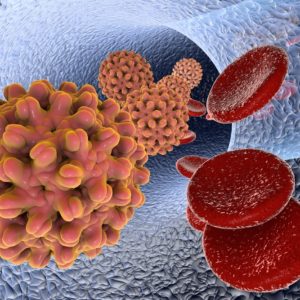Hepatitis E
Hepatitis E virus (HEV) is a small positive sense, single-stranded RNA virus. HEV is currently the only representative of the hepevirus genus, belonging to the family Hepeviridae. Four genotypes 1-4 of the Hepatitis E virus have been identified so far, with each genotype having a different geographical distribution. Transmission of HEV primarily occurs via the faecal-oral route, through contaminated food or water, but can be transmitted through blood transfusion products in some cases.
In healthy individuals, Hepatitis E is an asymptomatic or self-limiting disease. However, patient with a pre-existing chronic liver disease and pregnant women have an increased risk of liver failure and death. Diagnosis of HEV is achieved using serological and molecular methods of detection.
Hepatitis E Background
Hepatitis E virus (HEV) is a small positive sense, single-stranded RNA virus. HEV is currently the only representative of the hepevirus genus, belonging to the family Hepeviridae. Four genotypes 1-4 of the Hepatitis E virus have been identified so far, with each genotype having a different geographical distribution. HEV genotype 1 and 2 are restricted to humans and are found in Africa and Asia, whereas genotype 3 is found worldwide and genotype 4 is found in China and Japan. Both genotypes 3 and 4 generally circulate in animals including pigs, wild boar, deer and rabbits but can also infect humans (WHO).
Transmission of HEV primarily occurs via the faecal-oral route, through contaminated food or water. Infection through contaminated water is a typical route of transmission for HEV genotypes 1 and 2, particularly in endemic areas with poor sanitation. Infections involving HEV genotypes 3 and 4 have been linked to the consumption of undercooked pork and meat from infected animals. Reports suggest that HEV may also be transmitted via transfused blood products in areas where the virus is endemic.
In healthy individuals, Hepatitis E is an asymptomatic or self-limiting disease which can last for up to two weeks after the incubation period of 2-9 weeks. Symptoms can include fatigue, nausea, loss of appetite, abdominal pain, aching joints, slight hepatomegaly and numbness in arms and legs. Immunosuppressed patients infected with HEV may develop chronic liver disease after initial infection. In addition, patient with a pre-existing chronic liver disease and pregnant women have an increased risk of liver failure and death. Reports suggest that the risk of miscarriage, liver failure and death can increase during the second and third trimester of pregnancy.
HEV infection emerging as a significant disease of global health concern. Currently there is no effective treatment for HEV infection, although Ribavirin has been shown. to benefit immunosuppressed patients. A single vaccine has been developed and licensed for the prevention of HEV infection, which is under review by the World Health Organization.
References
World Health Organization: Fact sheets; Hepatitis E
Hepatitis E Antigens
Our Hepatitis E antigens include highly purified preparations of ORF2 with different purification tags. These antigens are suitable for use in assay development, vaccine research and for the preparation of Hepatitis E antibodies.
Hepatitis E Antibodies
Our monoclonal Hepatitis E antibodies target the HEV capsid (ORF2) and are suitable for use in diagnostic assay development and vaccine research.
Questions?
Check out our FAQ section for answers to the most frequently asked questions about our website and company.



